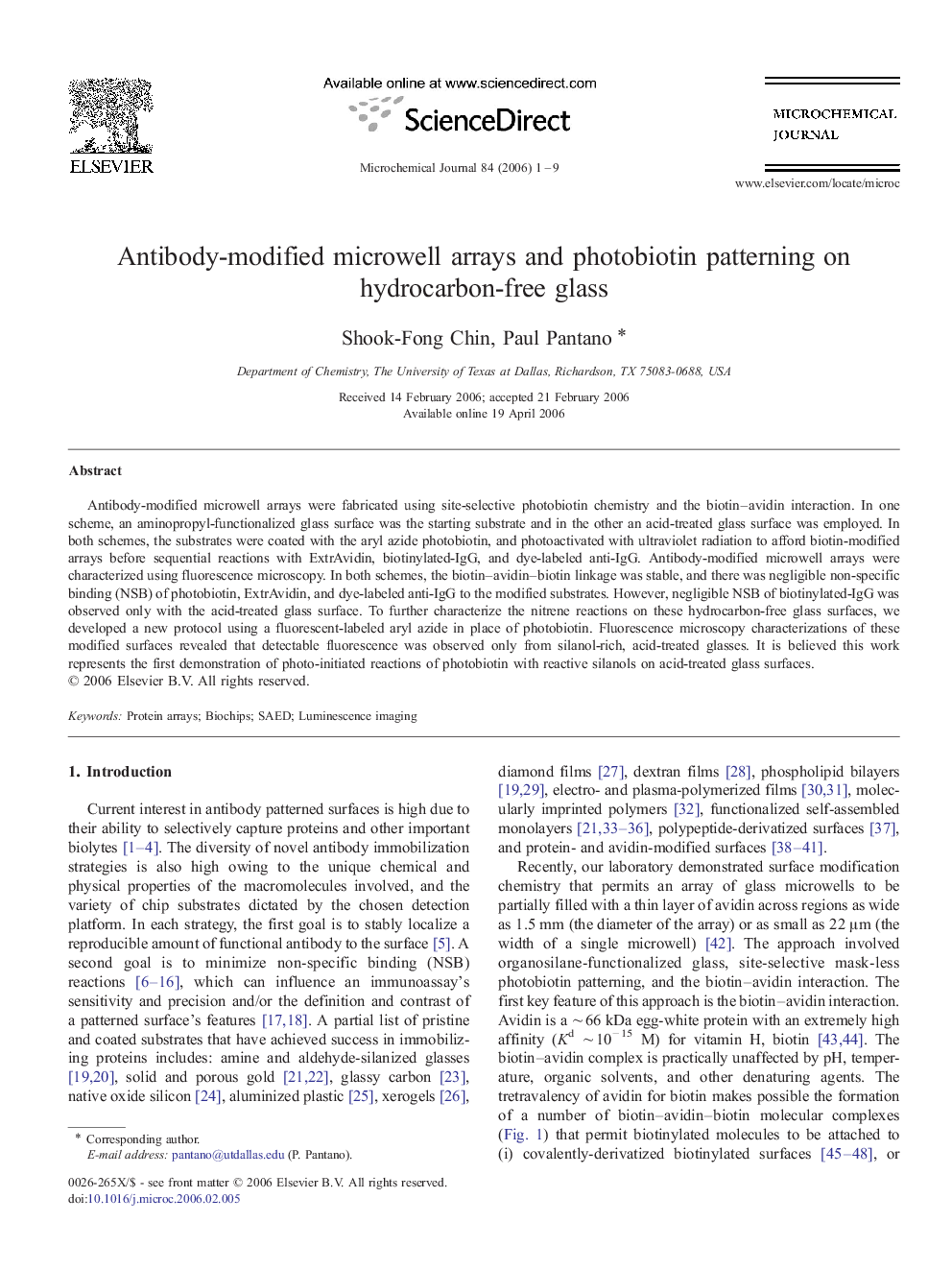| Article ID | Journal | Published Year | Pages | File Type |
|---|---|---|---|---|
| 1228424 | Microchemical Journal | 2006 | 9 Pages |
Antibody-modified microwell arrays were fabricated using site-selective photobiotin chemistry and the biotin–avidin interaction. In one scheme, an aminopropyl-functionalized glass surface was the starting substrate and in the other an acid-treated glass surface was employed. In both schemes, the substrates were coated with the aryl azide photobiotin, and photoactivated with ultraviolet radiation to afford biotin-modified arrays before sequential reactions with ExtrAvidin, biotinylated-IgG, and dye-labeled anti-IgG. Antibody-modified microwell arrays were characterized using fluorescence microscopy. In both schemes, the biotin–avidin–biotin linkage was stable, and there was negligible non-specific binding (NSB) of photobiotin, ExtrAvidin, and dye-labeled anti-IgG to the modified substrates. However, negligible NSB of biotinylated-IgG was observed only with the acid-treated glass surface. To further characterize the nitrene reactions on these hydrocarbon-free glass surfaces, we developed a new protocol using a fluorescent-labeled aryl azide in place of photobiotin. Fluorescence microscopy characterizations of these modified surfaces revealed that detectable fluorescence was observed only from silanol-rich, acid-treated glasses. It is believed this work represents the first demonstration of photo-initiated reactions of photobiotin with reactive silanols on acid-treated glass surfaces.
